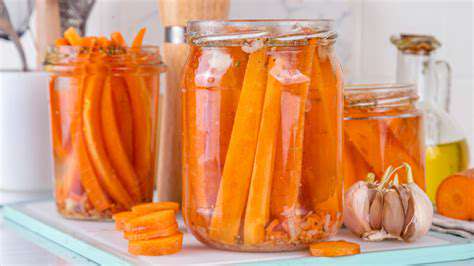How to Store Carrots: Keep Them Crisp
Jun 25, 2025 / btwgardenmachine/
For added protection, place paper towels or clean cloths in the storage container to absorb residual moisture. These preparation steps create optimal conditions for storage, helping your carrots stay crisp and tasty throughout the storage period. With careful preparation, you'll significantly improve your chances of having fresh, ready-to-use carrots whenever you need them.
Ideal Storage Environments for Carrot Preservation

Temperature Control
Maintaining consistent temperatures is crucial for preserving carrot quality. Temperature fluctuations cause texture changes and accelerate spoilage, particularly in extreme conditions. The ideal range between 32-40°F (0-4°C) slows metabolic processes while preventing freezing damage. This temperature zone also discourages mold and bacterial growth that could ruin your stored carrots.
Humidity Management
Balancing humidity is equally vital as temperature control for successful carrot storage. While excessive moisture promotes rot, insufficient humidity causes dehydration. The goal is to maintain about 95% relative humidity—enough to prevent wilting without encouraging mold. Regular monitoring helps maintain this delicate balance for optimal preservation.
Protection from Light
Light exposure triggers undesirable changes in stored carrots. Continuous darkness is essential to prevent greening and flavor changes in the roots. Even ambient light can stimulate sprouting, which depletes the carrot's nutrients and alters its texture. Always store carrots in opaque containers or completely dark spaces.
Air Circulation
Proper ventilation prevents condensation and gas buildup around stored carrots. While they need high humidity, stagnant air creates pockets of excess moisture that encourage spoilage. A well-designed storage system allows for gentle air movement while maintaining overall humidity levels.
Separation from Other Produce
Storing carrots away from certain fruits and vegetables is crucial. Ethylene-producing items like apples and pears accelerate carrot deterioration. Similarly, carrots absorb odors from strong-smelling neighbors like onions. Dedicated storage space or careful organization prevents these negative interactions.
Maintaining Carrot Crispness Over Time: Key Considerations

Understanding Carrot Storage Needs
Fresh, crisp carrots provide optimal texture and nutrition. Their storage requirements differ from many other vegetables due to their root structure. By meeting these specific needs, you can extend their crispness for weeks. The right combination of temperature, humidity, and handling makes all the difference in preserving quality.
Optimizing Root Cellar Conditions
Traditional root cellars offer ideal carrot storage when properly managed. Maintaining 32-40°F (0-4°C) with 95% humidity creates perfect preservation conditions. The natural insulation of underground storage provides temperature stability, while proper ventilation prevents excess moisture buildup. Regular monitoring ensures conditions remain optimal throughout the storage period.
Proper Handling and Preparation
How you handle carrots before storage significantly affects their longevity. Gentle cleaning without bruising and thorough drying are absolute musts. Remove green tops (but leave about 1 inch to prevent moisture loss) and trim any root hairs. These steps minimize points of potential decay while maintaining the carrot's natural protective coating.
The Importance of Proper Packaging
Packaging choice dramatically impacts storage success. Perforated plastic bags or breathable containers maintain humidity while allowing gas exchange. Some gardeners swear by packing carrots in slightly damp sand or sawdust, which provides consistent moisture without wetness. Avoid airtight containers that trap ethylene gas and promote rotting.
Refrigerator Storage Techniques
For modern households, refrigerators can substitute for root cellars with proper modifications. Store carrots in the crisper drawer with a damp paper towel to maintain humidity. Keep them in perforated plastic bags or wrap them in slightly damp cloth. Avoid storing near fruits that emit ethylene gas, and check regularly for condensation.
Choosing the Right Carrots
Storage success begins with selecting the best carrots. Look for firm, smooth roots with deep color and minimal blemishes. Smaller to medium carrots often store better than large ones. Varieties bred specifically for storage, like 'Bolero' or 'Chantenay', maintain quality longer than some fresh-eating types. Always inspect carefully for any signs of existing damage before storage.